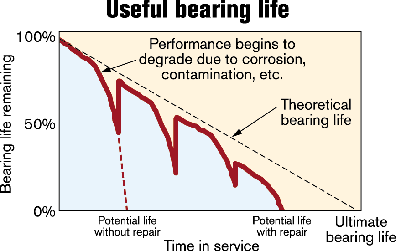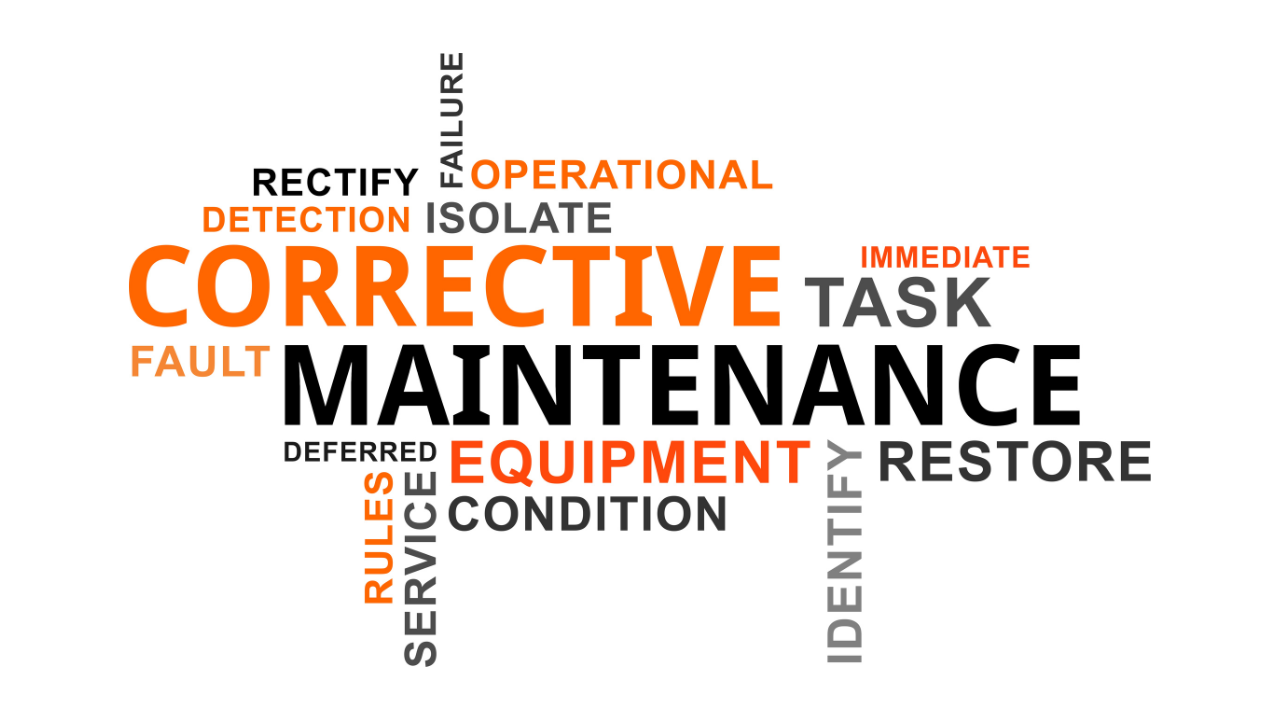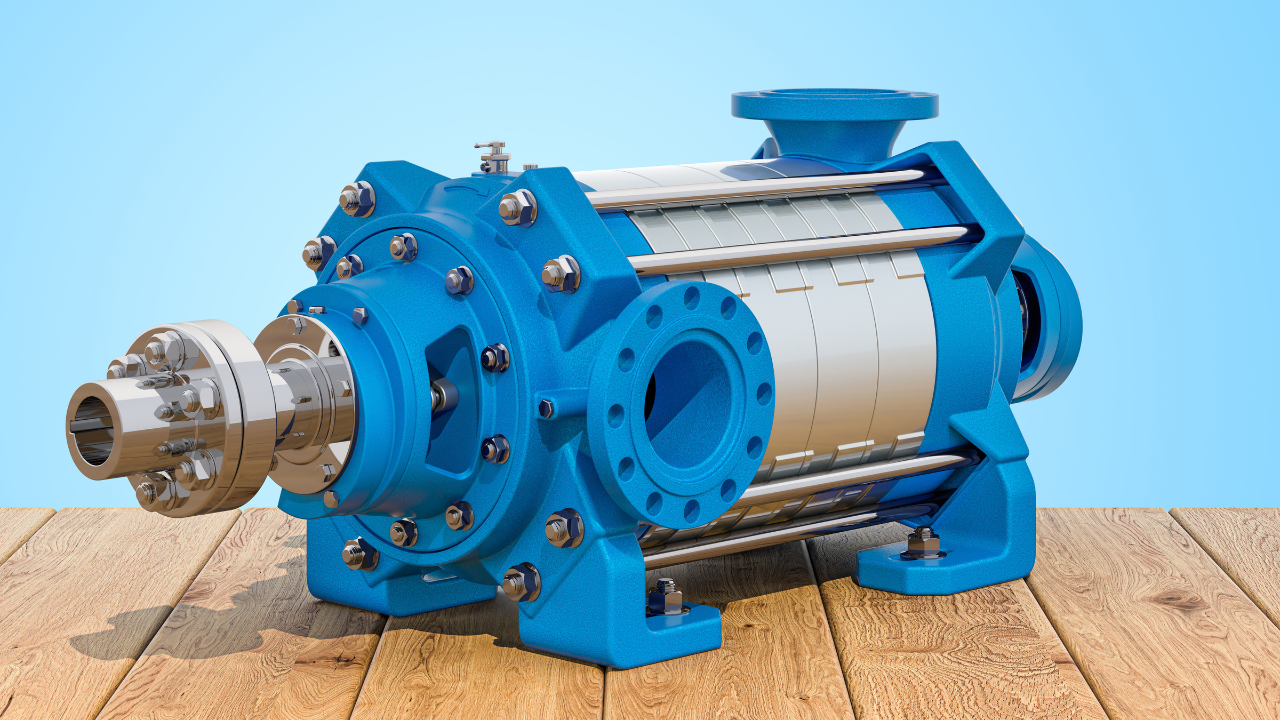Bearing Repair: An Alternative to Replacement
Roger L. Oberweiser, Manager, Industrial Bearing Services, The Timken Co., Canton, OH
Bearing repair is not a new concept, nor has it changed a great deal over the years — and that’s good news. Repairing damaged bearings is a precise science that has been fine-tuned over time through careful and gradual enhancements to provide superior results.

(Fig. 1).
Knowing and understanding the value of bearing repair means knowing what repair can do, when to use it, and where to get it done.
Benefits
Bearing design takes into account the use and application of the bearing and establishes an appropriate prediction for service and fatigue life. No matter who the manufacturer is, bearings often deviate from these expectations due to factors such as contamination, inadequate lubrication, and misalignment.

Bearings often can be returned to original specification for less time and money than purchasing new ones. A quality repair and reconditioning program can result in significant savings compared to discarding and replacing bearings. Depending on the scope of the work, bearing repair can save as much as 50% to 90% of the cost of purchasing a new bearing. Beyond the cost, repairs often save time compared to ordering replacement bearings, reducing costly downtime (Fig. 2).
Another value-added service of bearing repair is using damage analysis as a tool to identify difficult conditions and prevent future problems.
When to Repair
Although it offers many benefits, reconditioning is not always the best option for a damaged bearing. The challenge of properly utilizing bearing repair services is determining if and when a bearing needs repair, and deciding which options are the best economical and long-term decision.
- Visual inspection serves as the first step in deciding if a bearing needs repair. Careful review of additional criteria assists in determining the need for repair, such as:
- Is the bearing nearing or has it exceeded its suggested life expectancy?
- Have operating temperatures exceeded 200 F?
- Has the bearing been exposed to excessive vibration?
- Has the bearing been subjected to sudden changes in lubrication or temperature?
Early detection of a problem through routine checks can spare companies’ unnecessary downtime and expense and help to capitalize on the capabilities and benefits of bearing repair.
Regardless of the manufacturer, type of bearing, or application, proper treatment may preserve a bearing and restore it to like-new condition for continued use. Bearings with little or no damage often can be reconditioned and recycled easily and at low cost.
Remanufacturing Process
Once a bearing is damaged, it should undergo a rigorous process to determine if it is a candidate for repair.

If the bearing passes the first stage of inspection, it should undergo further review. This step serves to reveal a mode of damage, assessment of damage, and the scope of repair. The degree of bearing repair typically fits into three types.
Type I reconditioning is used for minor trouble spots and includes polishing, resetting of internal clearances, and spot grinding of any small surface defects to prevent further damage (Fig. 3).
Type II repair is for bearings with more extensive damage. This level involves major procedures such as regrinding of races, new spacers, and polishing of the bore and cup OD. The regrinding of raceways will also necessitate the manufacture of oversize rollers to maintain bearing geometry and clearance.
Type III remanufacturing takes Type II repair one step further by replacing one or more of the major components of the bearing that are not repairable.
These levels of repair have traditionally been suited for bearings with a minimum bore size of 8 in. However, reclamation service can be done for bearings as small as 3-in. OD.
Smaller bearings that were often thrown away can now be repaired if there are large quantities. Cleaning, inspection, and the application of a polished finish can return used bearing to good-as-new condition for a fraction of the cost of replacement.
Turnaround time on reconditioning and repairs can be as short as 2-4 weeks, depending on the needed repairs. Companies utilizing bearing repair should always request a complete quote, including cost and estimated repair time, when requesting any type of repair service.
Expertise in Bearing Repair
Technology and material advancements contribute to an increased potential for bearing remanufacturing and reconditioning programs. However, experience in recognizing and treating various types of damage is the only way to guarantee an accurate inspection and proper repair.
It is important to have any bearing repair performed by properly trained and experienced personnel, because unnecessary repairs can lead to additional damage and limited bearing life. Common reconditioning mistakes include:
- Improper roller polishing that creates flat spots
- Excessive deep spot grinding
- Mixing of preset components.
In addition to expertise, proper equipment is required not only to fix the problem, but also to ensure all damage has been reviewed and addressed. Magnifying glasses and proper lighting and measuring equipment are essential to perform thorough inspections and repairs.
More Info
For additional information on bearing repair services, visit timken.com/industrialservices. For lubrication information visit timken.com or call 877-484-6536. Article edited by Joseph L. Foszcz, Senior Editor, 630-288-8776, [email protected].
The Importance of Lubrication
Lubrication is more than simply an additive to a machine. Instead, it is an integral component of that machine and as such should be closely monitored to ensure it maintains its quality. Essential to all the moving parts, especially bearings, lubrication serves to carry away heat and protect bearing surfaces from corrosion and wear.
Too little lubrication causes additional friction and heat, which can cause premature bearing damage. Excess lubrication, at high speeds, can generate additional heat from churning, which causes the lubricant to break down thermally, leading to eventual bearing damage.
Bearing problems caused by inadequate lubrication have many forms, including roller end scoring from metal-to-metal contact and excessive wear on rollers and raceways. Excessive heat generation can cause cone large rib face scoring or “welding” damage or deformation. In extreme cases, inadequate lubrication causes rollers to skew or slide sideways, leading to bearing lockup.
There are signs that indicate when bearing lubrication is inadequate or in excess. If these signs are detected soon enough, conditions can be corrected before catastrophic damage occurs. With inadequate lubrication, gauges and operating temperatures will show the bearing is running hot, and it will become noisy from metal-to-metal contact. With excess lubrication, the lubricant can break down because of increased operating temperatures, as indicated by a dark brownish-black color.
With proper lubricant application and a regular maintenance schedule, bearing damage from lubrication problems can be avoided. Here are some tips to ensure proper bearing lubrication:
- Follow lubrication guidelines established by the equipment builder
- When grease packing a bearing, force the grease between the rollers and cage to ensure the bearing is packed completely full
- Watch equipment gauges for early indications of a problem, such as unusually high temperatures
- Listen for noise or unusual vibration
- Watch for lubricant leaks.
Related Articles

Keys for Effective Troubleshooting

Corrective Maintenance Task Generation

Availability in a Supply Constrained Environment is the #1 Issue for Refinery Executives

Weibull Point Process Applied to Repairable Subsystems

Energy Savings Through Pump Refurbishment and Coatings

Causes of Overheating in Cartridge Mechanical Seals




